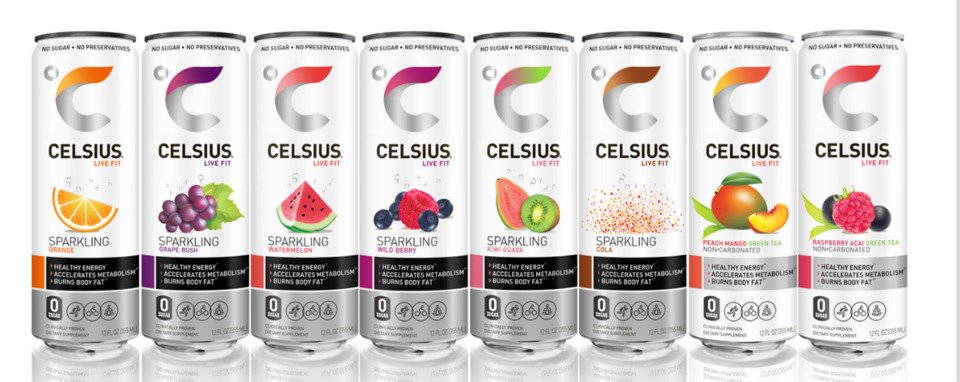3 Things to Chew On | How The Snack and Beverage Industry Maintains Relevancy
New trends brought on by the pandemic and social media have forced the Snack and Beverage industries to pivot in order to meet the demands of their changing consumer base.
As information becomes more widespread and consumers are becoming more selective, snack and soda brands are evolving to stay relevant by changing product development, brand identity, and marketing.
TL;DR: Consumers are making healthier, more informed consumption choices and brands are trying to catch up without taking advantage of them.
Data is Leading Brand Decision Making
Studies show that Americans are drinking less soda and making more conscious choices about their snacking habits. According to CookingLight, a 2015 study found that soda consumption dropped 25% since the early 90s, and the percentage has definitely increased since. Data doesn’t lie. With the steady decline of soda consumption, marketers are using data to influence product innovation.
A great example of this innovation is the booming seltzer industry. Soda giants like PepsiCo and The Coca-Cola Company capitalized on the growing interest in this space by introducing their own versions of sparkling water. PepsiCo introduced their line of unsweetened seltzers, bubly, that come in a variety of flavors. With a signature smile, and beloved celebrities like Neil Patrick Harris and Michael Bublé representing the brand, how could they not seem appealing?
AHA flavored sparkling water launched shortly after their competitor in 2020 and was The Coca-Cola Company’s first new brand in over a decade. They soon rolled out their cheeky “Can I Get an Aha?” campaign to promote the drink.
Now, thanks to data capturing the preferences of health conscious consumers, consumers get to enjoy their favorite brands with less sugar.
Consumers are More Informed
The digital age leads to more informed consumers who want healthier options.
Social media is the go-to news outlet and search engine. According to CNBC, YouTube is the world’s second largest search engine (second to Google) and TikTok is close behind. To celebrate its contribution to learning, TikTok released an ad titled “#tiktoktaughtme,” which showcases what people learned from the platform that they would not have learned otherwise.
The pandemic also slowed down the world to give people a chance to evaluate their health and wellness lifestyles. Trends on social media are influencing how people live. The “clean girl” lifestyle is a recent trend where the aesthetic of being a productive, early-riser who is organized and eats healthy is the goal.
Cooking videos with healthier snacks have also become all the rage. Emily Mariko’s cooking and lifestyle content goes viral because of her “clean girl” aesthetic and inclusion of healthy snacks/delicious recipes like her Salmon Rice Bowl. As social media perpetuates this health-focused lifestyle with an increased exposure to alternative diet options and behind the scenes look into food production, brands have shifted to adjust in addition to optimizing partnerships with influencers.
If Something Isn’t Working…Find an Alternative
Water isn’t for everyone, and neither are the traditional exercise drinks.
New adaptations that capitalize on the gap in the market for consumers looking for a “healthier” alternative to a traditional exercise drink or water have risen.
Brands target young people who are regulars at the gym looking for energy enhancing supplements (like caffeine and B12) to help improve their performance.

While Celsius is healthier than other energy drinks, it does contain ingredients that should be limited in people’s diets like high amounts of caffeine.
Not all of these exercise drinks are healthy, however. In an attempt to appear healthy, some marketing tactics from brands have shoppers fooled thinking that their products are healthy when they’re actually laced with harmful substances that have been linked to dependency and negative side effects. Despite some brands taking advantage of consumers, marketers can learn from the health wave that shifted people’s perspectives on consumption and use the consumer’s desire for actual health products for good.
Even though brands are having to shift their products to cater to the new wave of consumer preferences, the consumer is making it easy by laying out their customer profile on social media. These “healthier” people are more inclined to pick up a bag of Hippeas (due to the importance of intentional protein consumption) than Hot Cheetos. Brands can lean into this information and use that to their advantage when brainstorming the next product innovation, marketing strategy, or marketing campaign.
A call for marketers and agencies to participate in the 2025 Marketing Relationship Survey, before it’s too late.
On November 19, 2025, Atlanta’s vibrant marketing community united under one roof for the first-ever Atlanta Integrated Marketing Summit (AIMS) — a remarkable experience that turned inspiration into action, focused on meaningful connections, and highlighted incredible leaders from UPS, Kellanova, Edible Brands, and Papa Johns who are actively pushing the industry forward.
Explore the denim duel between AE’s Sydney Sweeney campaign and Gap’s Milkshake-fueled comeback—and what marketers can learn.
Most agency searches begin with urgency: a priority shift, a launch date appears, and suddenly, you’re writing an RFP at midnight. In that scramble, you invite too many firms, ask the wrong questions, and end up choosing based on pitch theater instead of day-to-day fit. The fix isn’t a better RFP template. It’s time - specifically, the time you spend getting to know agencies before you need one.
“Data-driven” marketing is about proactively leveraging insights to make strategic decisions. But what defines a truly data-driven media approach?
If your media strategy feels tangled and unclear, you’re not alone. Here’s how smart brands are simplifying the chaos and getting real results.
Whether you’re managing campaigns for a national brand, a franchise QSR, or a B2B tech company, the challenge is the same: how do you build smarter media strategies that actually tie back to real business outcomes? We spoke with top experts from Sagepath, Goodway Group, and Look Listen to dig into what’s working, what’s changing, and where media performance and analytics are headed next.
Media is about delivering results that are meaningful. Your strategy should be about more than impressions. But with siloed data and rising expectations, it's hard to prioritize meaning under pressure to perform.
That’s why we’ve brought together three powerful blogs filled with insights from industry experts at the top of their media game to help you rethink your media planning, simplify execution, and activate smarter strategies that drive growth.
“Data-driven” marketing is about proactively leveraging insights to make strategic decisions. But what defines a truly data-driven media approach?
Creating a marketing budget isn’t just a financial exercise; it’s a strategic act. It’s your roadmap for growth, your guardrail against wasted effort, and, when done well, your strongest case for internal alignment and external results.
But while most marketers know how much they wish they could spend, far fewer know how much they should. So, where do you begin?
Marketers today juggle numerous platforms, overwhelming data, and competing internal demands, creating a complex media landscape that clouds performance clarity. What drives this complexity, and how can brands effectively navigate it?
Today’s marketers face immense pressure to justify media spend and measure tangible impact. But fragmented data, inadequate tracking, and unclear KPIs often cloud visibility. How can brands build smarter strategies that truly connect media spend to real business outcomes?
At Setup, we don’t just listen, we track patterns, analyze them, and come up with solutions to assist marketers with their challenges. Every year, our Marketing Relationship Survey gathers insights from brand and agency marketers to identify the core challenges, shifts, and opportunities in the client–agency relationship. These aren’t hypotheticals; they’re real-time questions marketing leaders are actively asking. And your answers help drive the industry's evolution.
Is AI stripping consumers of excitement? Is there unconscious bias in AI? How can marketers stand out while using the same tech stack?
In conversations with marketing leaders in the high-tech and innovation sector, adopting AI is not the challenge. The future belongs to teams who adapt to AI while investing in human elements like curiosity, connection, and inspiration.
Advancements in AI over the last few years have shifted customer expectations. With all of this power and access, however, comes more responsibility on marketers to lead with intention and care. Explore the biggest shifts in High-tech + Innovation and how marketing leaders can act accordingly.
When it comes to picking an agency, chemistry between brands and agencies is often overlooked in the selection process, but it’s one of the biggest indicators of long-term success. Yes, you need a business partner with the right capabilities and experience, but when it comes down to the final candidates, chemistry is what truly sets long-term partners apart.
The path to growth for marketing Agencies in 2025 is no longer about simply acquiring new Clients; it’s about scaling effectively. With evolving Client demands, technological advancements, and increasing competition, Agencies must focus on strategies that enable sustainable and efficient expansion.
Based on insights from Setup’s research, expert advice, and industry trends over the last 10 years, here are five key strategies to help Agencies scale effectively in 2025.
Super Bowl LIX wasn’t just about football—it was a masterclass in marketing. Each year, brands gamble big (to the tune of $8 million per 30-second ad) for a chance to capture the nation’s attention. With such high stakes, the challenge isn’t just making a good ad—it’s making an ad that resonates long after the final whistle blows.
This year, amid a landscape of economic uncertainty and shifting consumer sentiment, many brands leaned away from risk-taking and played it safe. "Nowstalgia"—pairing rising stars with established icons—dominated, while humor, celebrity cameos, and absurdist comedy took center stage. And while some brands nailed it, others flopped despite their star-studded casts.
As competition intensifies and Clients get more selective about what they want, Agencies must navigate hurdles that directly affect their ability to meet Client expectations and learn to adjust. Let’s dive into the core obstacles Agencies are tackling this year, why they’re critical to address, and practical strategies to stay ahead in an ever-changing industry.
Choosing the right marketing Agency in 2025 is about more than finding a vendor—it’s about building a partnership that can adapt to your needs, communicate effectively, and drive long-term results. Start with clear goals, leverage trusted referrals, and prioritize compatibility and communication. Remember, the right Agency won’t just execute campaigns—they’ll act as an extension of your team, helping your Brand navigate challenges and seize opportunities.
While our previous blogs recapping the Marketing Relationship Survey highlight key communication tactics and needs to sustain and improve the Agency-Client relationships, today we’re simply asking: What kind of work is getting noticed and needed by Clients, and what should Agencies prioritize?
In the 6th annual Setup Marketing Relationship Survey, we uncovered that 40% of Clients intended to switch Agencies in the next 6 months. Although this is significantly less from previous years, the sentiment remains the same: Clients desire more from their Agency partners. This blog breaks down exactly what Clients desire from their Agency partners and how the two parties can work together to create harmonious relationships.
The Setup Marketing Relationship Survey revealed that 40% of Clients surveyed will switch Agency partners in the next six months. This is consistent with our 2023 survey results where Ad Age concluded that more reviews may be coming. Why are reviews coming and what could make the Agency-Client relationship stronger?
The marketing world is always changing, but the core principles of great leadership stay the same. To help you navigate this evolving landscape, we’ve gathered insights from some of the top CMOs in the business from our featured 2024 CMO Spotlight interviews. These ten lessons are just as relevant now as they’ll be in 2025, offering practical advice on leading with impact and staying adaptable in a fast-moving marketplace.
Spotify Wrapped, launched in 2016, has significantly contributed to Spotify's growth by engaging users through personalized listening data and encouraging social media sharing. There are a number of Brands that have created cultural touchstones that create hype and consumer anticipation. How can you implement these learnings into your own marketing strategy?
When Wicked debuted in theaters in 2024, it didn’t just break records—it created a cultural moment (some would say it defied expectations). With a jaw-dropping $164 million opening weekend surpassing other notable Broadway film adaptations like Les Miserable and Mean Girls, the beloved story featuring some of the world’s biggest stars was immediately a box office triumph and a marketing masterpiece. Behind its success was a multifaceted strategy picking out the perfect partnerships that not only thrilled fans of the original, but also reached entirely new audiences of all ages and preferences (even the musical haters).
Black Friday has undergone a dramatic transformation since its chaotic in-store origins in the 1960s. Once synonymous with one-day-only doorbuster deals and frenzied shopping, the event is now a weeks-long digital phenomenon, shaped by evolving consumer behavior, economic pressures, and innovative retailer strategies, not to mention some potential trust issues with consumers. Here’s a comprehensive look at how Brands and consumers are navigating Black Friday 2024.
Whether you’re an Agency or Brand marketing leader, or the point person (Account Services/Project Manager) in an Agency-Client relationship, it’s important to make people feel valued. We’ve compiled notes from countless conversations on what makes a relationship sustainable, and what can ruin it. Check it out!
The holiday season means show time for a number of industries, meaning Brands need to be on their A-game. With fierce competition and distractions abound, how can your company leave a lasting impression during the holidays to maintain Brand loyalty during the holidays and beyond?






























Over the past year, we’ve watched the following patterns emerge across seemingly unrelated sectors: rising consumer expectations, demand for authenticity, growing complexity, and the tension between automation and human connection.
We interviewed multiple marketers from an array of industries in our blogs below, and we discovered consistent trends across the board. Check out all of our industry blogs throughout 2025 from leaders at Blackbaud, Hiscox USA, Mimedx, MONPURE, Kimberly-Clark Professional, and more.